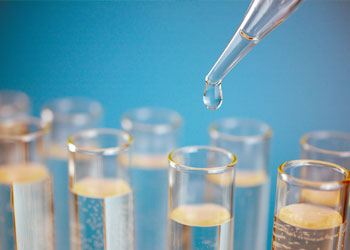Reports from US today indicate that over 2000 water systems across all the US states have tested positive for excessive lead contamination in the last four years.
Mind you, the mentioned water systems collectively deliver water to over six million people. This merely confirms that the water contamination issue that first emerged during the Flint crisis is nothing but a widespread problem.
As such, it’s crucial to understand everything there is to lead contamination in water. Most importantly, you should know how to detect and eliminate lead from water. This is a skill that will go a long way in protecting you, your loved ones, and those around you.

So check out the following pointers:
How Lead Gets into Drinking Water?
The biggest sources of lead in water are municipal pipes.
These are the pipes that supply fresh water to care centres, schools, homes, and all other institutions. Once they begin to corrode, lead enters the water. Interestingly, most of these pipes got made with copper in the 80s before getting buried into the ground when many homes were being built.
So where does the lead come from? These old pipes got fitted with lead solders to connect them. These are the components that pose a great risk to the water we use for drinking and cooking.
Several factors determine the extent at which lead seeps into the water. They include:
- The water chemistry (alkalinity and acidity)
- The amount and type of minerals in the water
- The amount of lead getting exposed to the water
- The water temperature
- The extent of wear in the piping system
- How long water rests in the pipes
- The kind of protective coating and scales in your plumbing system
And how great is the risk? According to the Center for Disease Control, over four million households have children who get exposed to high lead levels.
Unfortunately, this problem is unlikely to come to an end soon because it will take a lot of resources and time to replace the entire ageing municipal water infrastructure.
What are the Effects of Lead in Municipal Water?
The Safe Water Drinking Act mandates EPA (Environmental Protection Agency) to check the percentage of contaminants in water.
Contaminants should be at a level within the margin of safety where no adverse health effects can occur. These different ‘safe’ contaminants levels represent the government’s non-enforceable health goals known as MCLGs (Maximum Contaminant Level Goals).
Now EPA has set the MCLG for lead contamination at zero because it’s a toxic chemical that harms the body even at low contamination levels. Lead is persistent and bio-accumulates in the body gradually.
Fetuses, infants, and young children are extremely vulnerable to lead contamination because of behavioural and physical effects. Children who get exposed to low levels of lead will likely develop a damaged peripheral and central nervous system. This means that they will experience issues like a shorter stature, impaired hearing, impaired functioning and formation of red blood cells, as well as learning disabilities.
A dose of lead that is unlikely to harm an adult can have catastrophic effects on a young one. In rare cases, lead can even cause coma, seizures, and death. But adults are not safe either.
Here are other groups of people who can suffer heavily from lead contaminations:
– Pregnant Women

Lead can accumulate in the human body by getting stored together with calcium in the bones.
When an exposed woman gets pregnant, lead gets released from her bones as maternal calcium, especially if she has a dietary calcium deficit. Maternal calcium is what helps in the formation of a fetuses’ bones.
Generally, lead exposure to the fetus and mother will ultimately lead to premature birth and reduced growth of the fetus
– Elderly, Adults, and Young Adults
Lead is harmful to everyone. When you get exposed to lead, you’re likely to suffer from hypertension, increased blood pressure, or cardiovascular disease. Other effects include:
- Decreased kidney function
- Reproductive problems (both in women and men)
How to Know whether your Drinking Water Has Lead?

It’s imperative to start by learning about your home’s water supply.
The EPA requires all the community water utility service companies to prepare a quality report best known as the CCR (Consumer Confidence Report). This reports should get delivered to the customers by July 1 of every year. Therefore, don’t hesitate to contact your water utility service company for their latest report.
If your water gets sourced from a well or any other private water supply, visit the nearest health department for information on the contamination level in your area.
Alternatively, you can get your water tested for lead at your nearest certified laboratory. A single test ranges from $20 to $100.
How to Remove Lead from Drinking Water?
There are several methods you can use to eliminate lead in water:
– Distillation
In as much as it’s a slow and expensive process, distillation can remove all the dissolved materials on top of killing the biological contaminants in water.
MSF (multi-stage flash distillation) distillation and solar distillation are arguably the most common water distillation methods.
In the latter method, solar energy gets harnessed via a system of mirrors to heat the water. Once the contaminated water gets heated, its molecules convert into steam, before rising to leave behind the contaminants at the basin of the heating chamber.
The steam then condenses on the roof of the chamber and the water trickles down into collecting troughs. This way, you get clean water that’s free from any lead contaminants.
The MSF process constitutes several stages and used low pressure to flash the water into steam.
– Activated Carbon Filtration
Activated carbon is a material that can absorb heavy metals like magnesium and lead as well as other harmful contaminants.
Even so, when activated carbon gets used in a filter, its power of absorbing harmful chemicals get limited because the filter cartridges tend to fill up quickly. As a result, you’ll need to replace them frequently.
Additionally, the filters’ capability of netting out harmful contaminants in water diminishes after excessive use. It’s, therefore, paramount to invest in a quality filter if you’ll use this method.
– Reverse Osmosis

Reverse osmosis is not only the cheapest method of dealing with lead but also the most popular.
It’s widely considered to be the best method of protecting household water because it can eliminate over 95% of contaminants.
But what people use is partial reverse osmosis and not complete osmosis, as the latter is quite expensive. During the partial reverse osmosis treatment, water gets moves through a system of filters using household water pressure.
Membranes in the system then filter out contaminants, including lead and allow only water to flow through. Afterwards, the impurities get flushed away and what remains is clean drinking water.
In essence, reverse osmosis is a purification process that has no energy cost, while the entire system is easy to maintain and clean.
How to Reduce Your Family’s Exposure to Lead at Home?
- Use only cold water (from the faucet) for cooking, drinking, or making baby formula. Remember, water temperature is one of the factors that affect how badly water will corrode a lead component. This means that hot water is likely to have higher lead levels than cold water.
- Regularly clean your home’s aerator or faucet screen.
- Invest in a quality and certified water filter and know when to replace it.
- Before fetching drinking water, flush your pipes. This may involve taking a shower, running the tap, doing the dishes or laundry, or simply running your tap.
- Contact your water provider for information on service lines for removing lead.
Get Your Loved Ones Tested
The best way to ensure that you and your family haven’t been consuming excessive lead is to get tested.
For children, a family paediatrician or doctor is the ideal person to conduct the tests. Even so, you can visit your area’s county, city, or state health department for information about the best facilities to take your child for testing.
According to the Centers for Disease Control and Prevention, health measures ought to get initiated if a child’s blood has a lead level of more than five micrograms per deciliter.
Is it Safe to Shower in Lead-Contaminated Water?
Yes. Showering and bathing in contaminated water won’t be harmful to you or your child’s skin.
This is simply because the human skin can’t absorb heavy metals in water. Nonetheless, there are cases when the water may affect certain individual, especially if it’s highly corrosive.
Its, thus, vital to keep in touch with your local water authority. That should be your first source of lead contamination information and testing. Thankfully, many municipal authorities have websites that cater to all the needs of the consumers.
Bottom Line
It’s your family’s right to access safe and clean water.
So don’t shy away from taking all necessary actions required to protect your water supply from lead contamination. This will go a long way in preserving the wellbeing of your loved ones.



